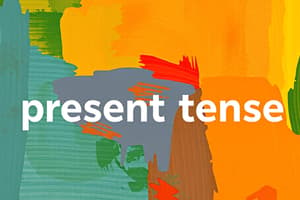Podcast
Questions and Answers
What does present-bias refer to?
What does present-bias refer to?
The tendency to prioritize immediate rewards over future rewards.
What model is known as β-δ discounting?
What model is known as β-δ discounting?
- Time-inconsistent model (correct)
- Exponential discounting model (correct)
- Time-consistent model
- Linear discounting model
In the β-δ discounting model, if β = 1, the model is equivalent to the ______ discounting model.
In the β-δ discounting model, if β = 1, the model is equivalent to the ______ discounting model.
exponential
What is a characteristic of a naive agent in decision-making?
What is a characteristic of a naive agent in decision-making?
A sophisticated agent correctly predicts their future time-inconsistency.
A sophisticated agent correctly predicts their future time-inconsistency.
What happens in the example of a student writing a paper?
What happens in the example of a student writing a paper?
Which of the following is an experimental method used to estimate time preferences?
Which of the following is an experimental method used to estimate time preferences?
Time-inconsistency can be explained by the concept of the ______ self.
Time-inconsistency can be explained by the concept of the ______ self.
Flashcards are hidden until you start studying
Study Notes
Present Bias
- Present bias refers to the tendency to prioritize immediate rewards over future benefits, leading to procrastination.
- A time-consistent planner would act immediately if it’s beneficial to do something next week or month.
Behavioral Model: Present-Bias
- The β − δ Discounting Model, proposed by Strotz and popularized by Laibson, adjusts the utility function to account for present bias.
- Model equation: U(c) = u(c1) + βδu(c2) + βδ²u(c3) + … + βδ^(T-1)u(cT)
- If β = 1, it aligns with the exponential discounting model; otherwise, present utility is weighted more heavily.
Example of Time-Inconsistency
- Consider two choices over three periods:
- Eating well: utility (u2 = 5, u3 = 10)
- Eating poorly: utility (u2 = 8, u3 = 6)
- With present-biased preferences (β = ½, δ = 1), choices can change over time, leading to incidents like choosing to "eat poorly" in the second period, despite a previous commitment.
Non-Discounting Models of Time Inconsistency
- Dual self: a conflict between a logical planner and impulsive doers for each time period.
- Hot vs. cold decision states influence decision-making and consistency based on context and cravings.
- Temptation preferences impact choices based on available options, which can cause perceived time inconsistency.
Procrastination in Decision Making
- When deciding on a singular task across several periods, backward induction is utilized to understand when an agent may procrastinate.
- Naive agents believe their future selves will act consistently; sophisticated agents understand their future inconsistency.
Example: Paper Writing
- A student's paper is due in four weeks, with costs associated with writing on certain weekends varying by how enjoyable the film choices are.
- Time consistency results in writing the paper progressively earlier leading up to the deadline.
Decision Tree Utilization
- Visualization of decisions helps track a student's choices across periods, shorter decision paths typically lead to later paper submission, often resulting in missing out on better movie options.
Naive vs. Sophisticated Agents
- Naive agents mistakenly believe they will behave consistently in the future, leading them to procrastinate until the last moment.
- Sophisticated agents know they are inconsistent and may compensate by acting earlier.
Measuring Time Preferences
- Experimental methods aim to estimate preference parameters (β, δ) through trade-off scenarios between different time periods.
- Willingness to pay is a typical method; subjects indicate minimal acceptable current amounts for future payments.
Multiple Price List Methodology
- Used to gauge time preference through choices between sooner and later rewards.
- The changeover point from preferring the immediate reward to the delayed reward helps calculate individual time preference parameters efficiently.
Studying That Suits You
Use AI to generate personalized quizzes and flashcards to suit your learning preferences.




